115. A thought worth revisiting --
Several entries back, I reprinted in full an entry made on Paul Hosse's blog, known as Another Opinion, written by someone, someone I now know to be someone I have known for years, who calls themself Moderate Man an entry called "Big Steps." In my discussion of Moderate Man's posting, I mentioned discussions my friend Ken Herndon (Jefferson County's County Judge/Executive sans portfolio) and I had had in the past along the same lines.
Over the weekend, the Courier-Journal presented a Special Op/Ed piece, written by Herndon, on the matter. If you didn't read it, here it is again. A link to the original article appears below.
***** *****
Amenities taxes offer broad support
Libraries, parks, zoos can benefit
By Ken Herndon
Special to The Courier-Journal
On May 9, supporters of the Louisville Free Public Library announced an initiative to place, on this November's ballot, a vote to increase Jefferson County's occupational tax by two-tenths of 1 percent to raise $38.9 million to revamp a library system that was once one of the nation's best, but which has, in recent years, had to struggle because of inadequate revenue.
Many communities -- most, in fact -- struggle to fund their "community assets" -- especially in these days of tighter budgets all around. Most strive to solve one problem at a time, like the library proposal or, just last year, the Louisville Orchestra funding shortfall. A smaller number, however, have boldly decided to address funding issues for multiple projects simultaneously as part of a grander, more comprehensive package, sometimes called Quality of Life initiatives.
Seattle, Denver and Pittsburgh among them, these communities have enacted far-reaching, tax-supported programs that establish funding mechanisms through which a multitude of projects are supported, enabling each community to provide an ongoing revenue stream to support everything from parks to zoos to sports facilities to light-rail systems to the arts.
Louisville should do the same.
Not only would the successful implementation of such an initiative make us instantly more competitive, I believe that a grander program would actually have a better chance of passage since, unlike the narrow focus of the library proposal, almost every voter would likely have a special affinity for one or more of the numerous beneficiaries of a broader plan.
The effort, energy, money and political capital it would take to get the library tax passed would be not be significantly different from that needed to pass a much broader, more visionary alternative -- so why not go for the gusto? Further, the library vote, successful or not, could effectively poison the well for any other initiative down the road. Once that political capital was spent, it is unlikely that anyone would dare consider another attempt for anything else in the foreseeable future.
Raising the occupational tax rate by five-tenths instead of two, for example, would garner $99.5 million annually. Or another alternative, adding a penny to the sales tax in Jefferson County, would garner at least $100 million per year, according to University of Louisville economist Paul Coomes. Many consider the sales tax option to be less regressive, since only those who spend actually pay the tax -- therefore reducing the burden on folks with lower incomes. Each initiative in each city is like a fingerprint, unique to local needs, local desires and local or state governmental structures and limitations. Some have a time limit, and some are perpetual. They can be based upon property, occupational or sales taxes, or some combination.
As an example for consideration, I would like to share some details of the Allegheny Regional Asset District in Pittsburgh primarily because it included, from its inception, funding for a wide variety of programs and projects, large and small -- including libraries. Created in 1994, the Allegheny Regional Asset District is a special-purpose unit of local government but has no independent taxing authority. Allegheny County was authorized by the Pennsylvania Legislature to levy a 1 percent sales tax in addition to the state sales tax in order to fund the activities of the district and provide funds for county and local government tax reform. Allegheny County is not able to increase the tax levy without additional state approval.
Jefferson County would also have to get legislative approval for a broader plan based upon the occupational tax. Some say such permission is unlikely to be granted. They forget, however, that twice in the last five years the General Assembly did exactly that -- with merger in 2000 and the hotel tax in the 2007 session. The sales tax option, while less regressive, would require a constitutional amendment. Amendment language for a "local option" is currently under consideration.
One important note regarding the Pittsburgh plan: Of those taxes collected in Allegheny County, 25 percent goes directly to county government and 25 percent goes to the other municipal governments within Allegheny County -- a component that we would likely choose not to emulate. The remaining 50 percent, which is directly relevant to this conversation, goes to the Asset District and is distributed to libraries, parks, sports facilities and civic, cultural and recreational entities of all sizes.
That distribution is made by a board of directors composed of four persons appointed by the county chief executive, two appointed by the mayor of Pittsburgh and one person elected by those six appointees. Each proposed allocation requires the support of six of the seven board members. The board also appoints a 27-person advisory board to provide public input and comment on policies and procedures for maximum accountability.
The final budget allocation for 2006 totaled $74 million, of which 31 percent supported libraries, 27 percent went for parks, 10 percent for special facilities (zoo, aviary, conservatory), 22 percent for sports facilities and 9 percent for arts and cultural organizations. In the 11 years of its existence, the Allegheny Regional Asset District has distributed over $826 million to almost 150 projects and organizations. Little wonder Pittsburgh's star has been consistently rising.
As I mentioned, Allegheny County was granted the authority to form this taxing district by the Pennsylvania legislature.
We would need to follow a similar path in this state. Unlike California and Oregon, and similar to Pennsylvania, Kentucky is not a referendum state. In order to attain the ability to vote on such a tax, Jefferson County would first need to be granted permission to do so by the General Assembly either for a single opportunity on a single issue like merger or, as many would prefer, to have the ongoing opportunity, the local option, in place as needs occur.
Yes, it would take longer than the library tax vote planned for this fall, but the payoff would be worth the wait. At the end of the day, no one wakes up in the middle of the night having dreamt of paying more taxes. But we all have walked in the bright light of day and noted things that we want or need for the community we love. And, if we're fiscally responsible, we know that we have to pay for what we want.
If a program is presented to the public properly, if the long-term benefits are clearly demonstrated and if the subsequent expenditures are very detailed, many believe that the public would respond favorably. Thirty-four years ago, the last time we passed a tax increase by referendum to create TARC, Mayor Harvey Sloane and County Judge Executive Louis J. (Todd) Hollenbach led just such an effort.
Three decades ago, the people of Kentucky, hardly a tax-and-spend state, voted to raise the state sales tax by a penny, and 15 years ago, we raised the income taxes to support education reform. Compelling cases were made and Kentuckians responded. And we will again. As a community, a state or a nation, we have to decide what we want and then we have to pay for it. Initiatives like the Allegheny Regional Asset District, and others like it across the nation, provide a template for our future.
Ken Herndon is the director of operations of the Louisville Downtown Management District, and vice president of the Old Louisville Neighborhood Council. The views expressed in this article are his own, not those of those organizations.
***** *****
A political friend of mine sent me an email asking my opinion of Ken's piece. Of course, I told him I agreed wholeheartedly. I added that while the Council and the Mayor said they will support the Library if and when the voters approve it, this plan of Ken's is so broad, I am sure no one of these elected leaders would step and and actually lead. Ken mentioned the TARC vote in the early 1970s. Had he gone back just a few more years, he would have found the bonding refendum on several other projects, some of which passed, some of which didn't; votes which lead to the construction of the southwest Jefferson floodwall, the southwest Jefferson Community College, the eventual building of the Louis D. Brandeis Jefferson Hall of Justice, and several other public amenities. Like TARC, Judge Hollenbach pushed for these votes and had the help of then County Attorney J. Bruce Miller, as well as several southwest Jefferson legislators, among them Dottie Priddy, Jim Dunn, and Al Bennett. All of these folks were leading, as opposed to following. Politicians like Hollenbach and others from an earlier era, who lead the charge for public improvements (including the raising of taxes or borrowing by bonding) are rightfully called leaders. Those who don't, haven't, or won't, should be afforded some descriptive term other than leader.
http://www.courier-journal.com/apps/pbcs.dll/article?AID=/20070603/OPINION04/706030440/1016/opinion















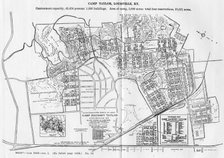
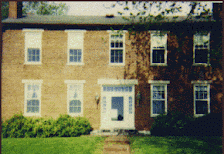

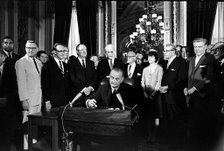

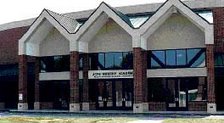


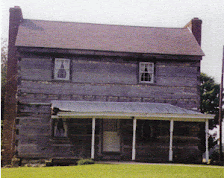
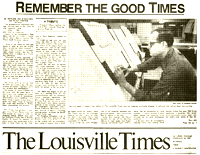
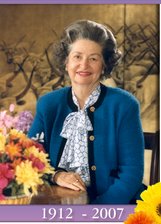

No comments:
Post a Comment